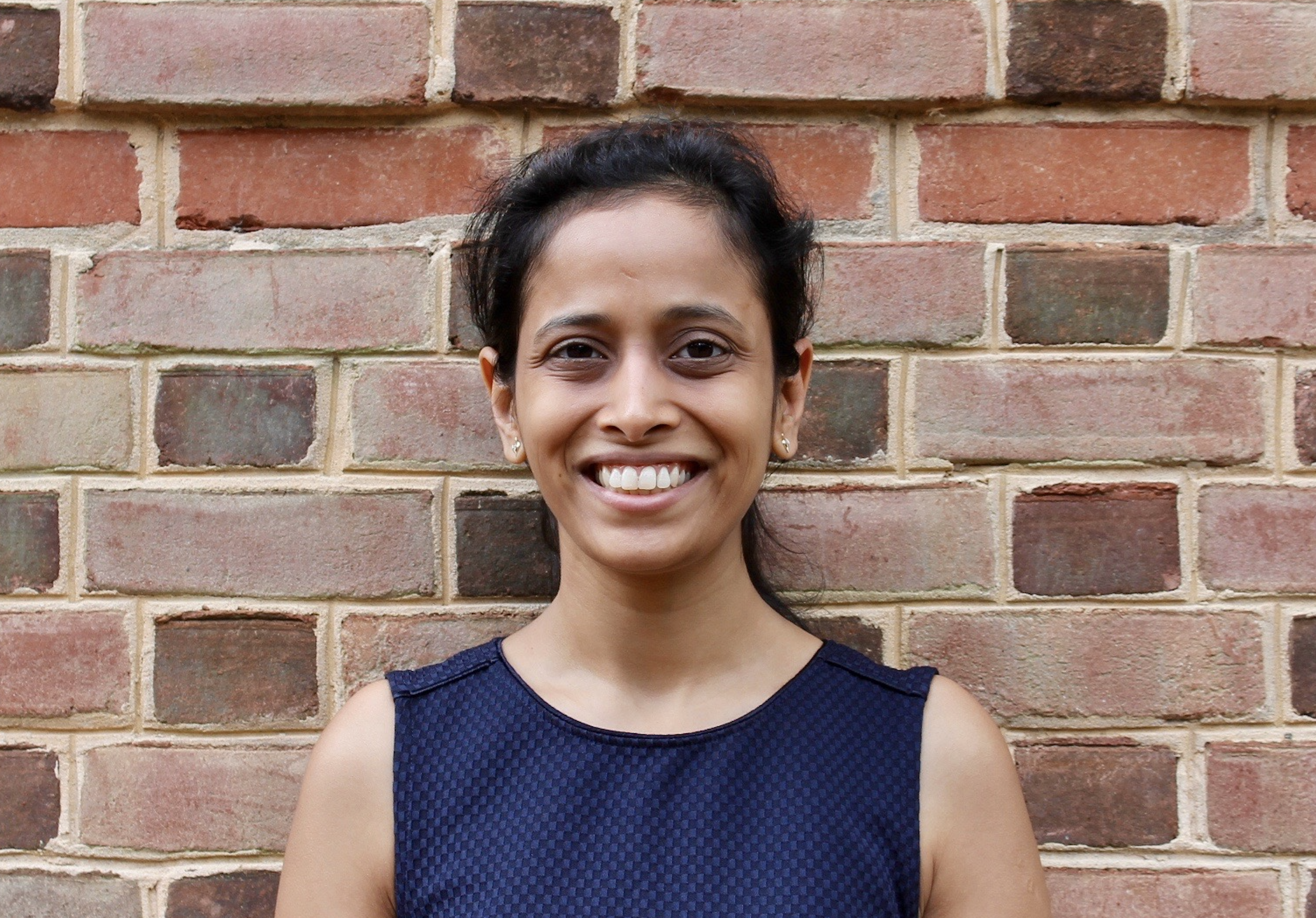Prajkta Kallurkar Completes Ph.D. Dissertation Defense

The Applied Science Department would like to officially congratulate Dr. Prajkta Kallurkar on successfully defending her Ph.D. Dissertation.
Prajkta Kallurkar, from India, earned a Bachelor of Technology in Instrumentation & Control Engineering from Gujarat Technological University, India in 2013. Then she began her graduate study in Biomedical Engineering at Indian Institute of Technology, India and received a Master of Technology in 2015. After finishing her graduate studies, she worked as a Research Assistant at All India Institute of Medical Sciences, India. She began her doctoral study in the Department of Applied Science at William & Mary in Fall 2016 under the supervision of Christopher A. Del Negro in the Neuroscience Lab. Her research focuses on studying the mechanisms underlying inspiratory rhythm generation, as well as the mechanisms that influence the motor output for inspiratory breathing movements.
Dissertation Title: Physiological and Transcriptomic Analyses of Inspiratory Rhythm- and Pattern-generating Interneurons of the preBötzinger Complex in Mice
Abstract: Breathing is a vital rhythmic behavior essential for life. The preBötzinger complex (preBötC) of the lower brainstem houses a cluster of interneurons that generate the respiratory rhythm in humans and all terrestrial mammals. Neurons of the preBötC produce rhythmic bursts of neural activity that drive inspiration, the only inexorable active phase of the breathing cycle (expiration is normally passive). preBötC interneurons that comprise the core inspiratory rhythm generator are derived from precursors that express the transcription factor developing brain homeobox 1 (Dbx1). Neurons in the preBötC derived from Dbx1-expressing progenitors (hereafter referred to as Dbx1 preBötC neurons) produce rhythmic bursts of spike activity as well as the fundamental output that then drives inspiratory-related pump and airway resistance muscles.
A longstanding question in respiratory neuroscience is whether rhythm (inspiratory frequency) and pattern (motor output to inspiratory-related muscles) are controlled by distinct sets of neurons and their neural mechanisms. Here, I test the burstlet theory of inspiratory rhythm- and pattern-generation that demonstrates that inspiratory rhythm in preBötC microcircuits occurs independently without obligatory neural bursts that generate motor output responsible for airway control, which affirms the discrete separation of preBötC neurons into “rhythm-related” and “pattern-related” camps.
The question articulated above has been refined over the past decade to consider whether rhythm and pattern might be separately mediated by discrete sets of Dbx1 neurons. Next, I delve deeper in order to distinguish the inspiratory rhythm- and pattern- generating populations of Dbx1 preBötC neurons, starting with their classification electrophysiologically on the basis on key intrinsic properties associated with either rhythmogenesis or motor pattern (i.e., output). I then perform patch-seq, which involves whole-cell patch-clamp recording of Dbx1 preBötC neurons and then by extraction of their cytoplasmic contents, followed by RNA sequencing and transcriptome analyses. I show that 123 genes significantly differentiate the putative rhythm- and pattern- generating populations of Dbx1 preBötC neurons. Surprisingly, the differentially expressed genes do not pertain to the ion channels that give rise to their distinct electrophysiological disparities. Nevertheless, the expression of synaptic receptors and neuromodulators appears to delineate how these discrete sets of neurons are programmed to play different roles in breathing rhythm vs. pattern. The deliverable of the project provides high-quality transcriptomes at the cellular origin of breathing, a key physiological behavior to the scientific commons and to provide distinct genetic targets to manipulate and perturb breathing’s cellular and molecular underpinnings.
I conclude that discrete sets of Dbx1 preBötC neurons generate rhythm and mediate fundamental aspects of inspiratory output pattern. These neuron types are distinct in terms of physiology and transcriptome, which answers a longstanding question in respiratory neurobiology about the neural origins of inspiratory breathing movements.
Congratulations again, Dr. Kallurkar!















